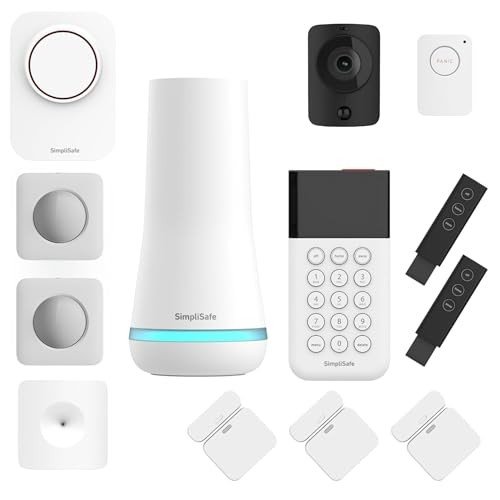Five Things You've Never Learned About Buy Led Lights UK

The Ultimate Guide to Buying LED Lights in the UK
Recently, LED lights have actually surged in popularity due to their energy effectiveness, durability, and flexibility. As the UK moves towards more sustainable energy practices, numerous house owners and companies are making the switch from traditional incandescent and fluorescent bulbs to LED lighting. This post aims to assist readers through the process of purchasing LED lights in the UK, highlighting key considerations, advantages, and regularly asked questions.
Understanding LED Lighting
What are LED lights?LED stands for Light Emitting Diode. Unlike traditional bulbs, LED lights create light through a semiconductor. This innovation is not just more energy-efficient but likewise produces less heat, reducing electrical power costs in the long run.
Advantages of LED Lights
Energy Efficiency
- LED lights utilize up to 80% less electricity than traditional incandescent bulbs.
- They convert almost all the energy they take in into light instead of heat.
Longevity
- Average life-span of LED lights is around 15,000 to 50,000 hours, considerably outlasting traditional bulbs.
Environmental Impact
- Lowered energy intake decreases carbon footprints.
- LEDs consist of no harmful materials like mercury, making them environmentally friendly.
Variety and Versatility
- Offered in different shapes, colors, and brightness levels ideal for various applications.
Instantaneous Lighting and Dimming Capabilities
- LEDs light up quickly and can be dimmed for particular lighting requirements without flickering.
Key Factors to Consider When Buying LED Lights
When searching for LED lights in the UK, it's vital to think about various factors to ensure you buy the ideal item for your needs.
1. Brightness Level
Brightness in LED lights is determined in lumens. Greater lumens indicate brighter lighting. Here's a fast reference:
| Wattage (Traditional Bulb) | Lumens (LED Equivalent) |
|---|---|
| 40W | 450 |
| 60W | 800 |
| 100W | 1600 |
2. Color Temperature
LEDs come in numerous color temperature levels, measured in Kelvin (K). Here's a breakdown of color temperatures:
- Warm White (2700K - 3000K): Ideal for homes, creates a relaxing atmosphere.
- Cool White (4000K - 4500K): Suitable for work areas, offering a clean, intense light.
- Daytime (5000K - 6500K): Mimics natural daylight, ideal for outdoor use or specific job lighting.
3. Dimmability
Not all LED lights are dimmable. If you want the flexibility to adjust brightness levels, make sure that the LEDs you select are compatible with dimmer switches.
4. Component Compatibility
Consider the kind of fixtures in which you'll be positioning the LEDs. Common fitting key ins the UK include:
- BAYONET (B22): Commonly utilized in homes.
- Edison Screw (E27, E14): Popular for both decorative and general lighting.
- GU10: Often utilized for spotlights and recessed lighting.
5. Energy Rating
Check the energy score of the LED light. A lot of LED bulbs will be rated highly (A+ or higher) for energy performance.
6. Life-span & & Warranty Buying quality LED lights frequently features service warranties varying from 1 to 5 years. A longer warranty might suggest a more durable product.
Where to Buy LED Lights in the UK
LED lights are commonly readily available across different platforms, including:
Physical Stores:
- DIY and home improvement stores like B&Q, Homebase, and Wickes.
- Supermarkets such as Tesco and Sainsbury's.
Online Retailers:
- E-commerce giants like Amazon and eBay.
- Specialized lighting sites like LED Hut or Lights4Fun.
Local Electrical Suppliers:
- Independent electric supply stores typically supply professional guidance.
Recommended Brands
When buying LED lights, consider reputable brand names understood for their quality and innovation, such as:
- Philips
- Osram
- Sylvania
- GE Lighting
- IKEA
Regularly Asked Questions (FAQs)
1. Read Home Page ?Definitely. While LED lights may have a greater in advance cost compared to traditional bulbs, their energy effectiveness and long life-span indicate they will save you money on energy bills in time.
2. Can I use LED lights in my existing fixtures?Yes, as long as you pick bulbs compatible with your fixtures (BAYONET, Edison Screw, GU10, and so on), you can quickly replace traditional bulbs with LEDs.
3. Why are some LED bulbs more costly than others?Rate distinctions can be attributed to brand name reputation, innovation (such as smart functions), energy performance scores, and warranty durations.
4. Do LED lights emit hazardous radiation?No, LED lights do not release ultraviolet or infrared radiation and are thought about safe for home use.
5. Can I recycle LED bulbs?Yes, numerous regional councils have recycling programs for LED bulbs. Examine local guidelines for disposal guidelines.
Buying LED lights in the UK is a smart option for those wanting to conserve energy, minimize costs, and enhance their lighting options. By considering aspects such as brightness, color temperature level, component compatibility, and trustworthy brand names, purchasers can confidently make informed decisions. Embracing LED technology is not just advantageous for private households and businesses, however it also adds to a more sustainable future for the environment. Whether you head to a regional store or search online, the transition to LED lighting is a step towards a brighter, cleaner world.

